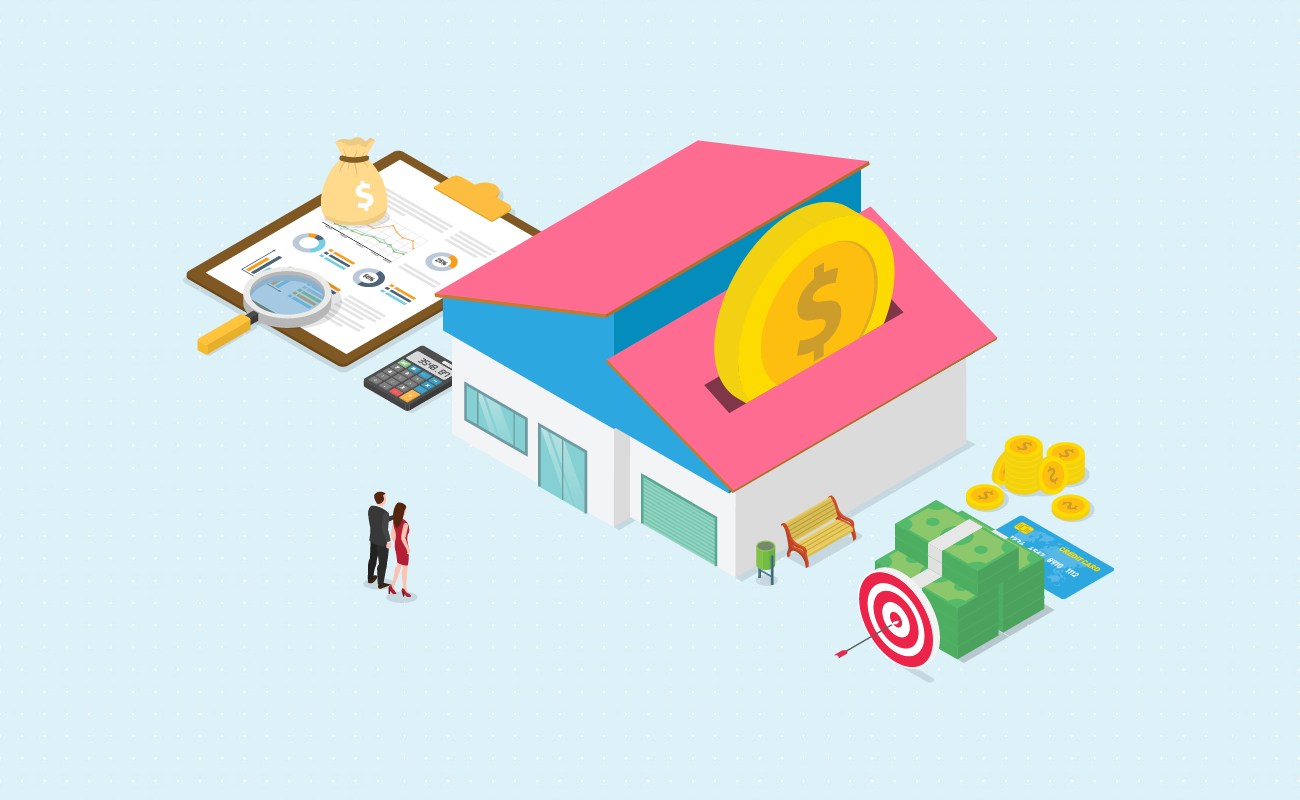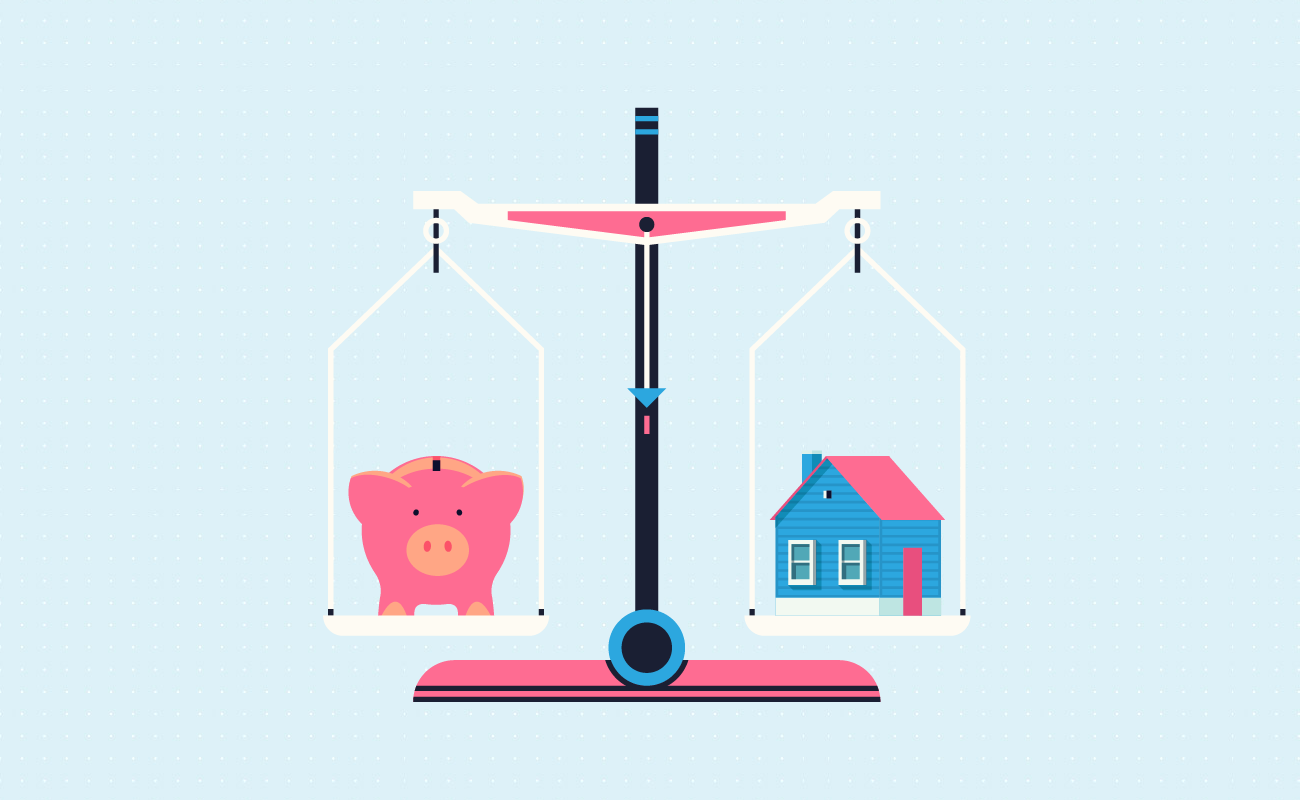Fixed Rates
30 yr
25 yr
20 yr
15 yr
10 yr
Compare Terms
Compare Rates
Real APR
Adjustable Rates
Qualification
Affordability
Renter Affordability
Rent vs Buy
Price per Square Foot
Jumbo
Home Sellers
 Mortgage Consolidation Refinancing Calculator
Mortgage Consolidation Refinancing CalculatorIf you have a first and second mortgage you are considering consolidating you can use this calculator to figure how much you will save on your monthly payment & total interest savings if you refinance to consolidate your loans into a single loan. This calculator will also show how long it will take for you to break even on closing costs, though please only enter the principal and interest portion of the loans for accurate calculations. Including other expenses like property taxes, HOA fees, or homeowners insurance would throw off the calculations.
For this calculator to work correctly your refinance rate must be lower than your blended interest rate on your previous mortgages.
If you would also like to extract equity from your home please use our cash out refinancing calculator.
Guide published by Jose Abuyuan on September 10, 2020

Approximately 14.5 million American homeowners were considered “equity-rich” in the first quarter of 2020, which represents 26 percent of all residences in the U.S. If you’ve gained substantial home equity, you might be one of many people who have a second mortgage.
Homeowners can secure a second mortgage by taking a home equity loan or a home equity line of credit (HELOC). If you have enough equity in your home, you can access this resource to pay for major expenses. People use this extra cash to fund their child’s college education. If your house is due for repairs and renovation, you can tap your home equity. Others use their home equity to consolidate high-interest debts.
When you take a second mortgage, you pay a separate monthly payment to your second lender. This means you’re paying for both your original mortgage and your second mortgage. And between credit card bills, car loans, and other expenses, it’s challenging to track several payments. Moreover, if both mortgages have high interest rates, they can further strain your finances.
But don’t fret. There is a way to combine your original mortgage and second mortgage into one loan. You can consolidate your first and second mortgage through refinancing. Our guide below will explain the basics of mortgage consolidation. We’ll also discuss when this option is a good idea, and when it might be better not to refinance.
If you’re considering refinancing your original mortgage, it makes sense to roll in your second mortgage into one loan. This option is similar to cash-out refinancing, except you are taking that second lump of cash to pay off your HELOC or home equity loan. This type of debt consolidation is not common unless interest rates sharply drop. In some cases, homeowners may consolidate their first mortgage with their second mortgage together with other debts.
Like traditional refinancing, when you consolidate your first and second mortgage, you have the option to change your interest rate and loan term. This means you can secure a lower rate than your first and second mortgage. To maximize your interest savings, be sure to secure the lowest rate possible. Mortgage consolidation refinancing simplifies your budget by allowing you to make one payment toward your mortgage.
When It’s Considered a Cash-out
If you refinance to consolidate your first and second mortgage, and obtain more money than your first mortgage balance, lenders will consider it a cash-out refinance. If this is the case, your loan will be subject to loan-to-value limitations. Most lenders limit cash-out loans to 80 percent of a home’s value. If you’ve borrowed more than 80 percent between your first and second mortgage, a lender may grant your loan. However, the amount you can borrow will likely be reduced and they will charge a higher interest rate as they are more exposed to risk. Mortgages with a loan-to-value (LTV) above 80 percent also require private mortgage insurance (PMI).

It’s good to consolidate your first and second mortgage when you haven’t borrowed money from your second mortgage in the last 12 months. Lenders may agree to consolidate your first and second mortgage into a rate-and-term refinance even if you’ve just opened a second mortgage. As long as you made no draws in the past 12 months, it reduces the required equity position by 20 percent.
There are situations, however, where it may not be worth refinancing to consolidate your first and second mortgage. Take note of the following scenarios before consolidating your home loans:

To understand how mortgage consolidation refinancing works, let’s use our calculator above to compute the following example.
Suppose your first mortgage has a balance of $200,000 at 6 percent APR, and a monthly payment of $1,200. Your second mortgage has a balance of $25,000 at 8 percent APR and a $320 monthly payment. If you add your monthly payment from your first and second mortgage, it amounts to $1,520 per month.
| Loan Details | First Mortgage | Second Mortgage |
|---|---|---|
| Remaining balance | $200,000 | $25,000 |
| Interest rate | 6% APR | 8% APR |
| Monthly payment | $1,200 | $320 |
Now, you want to refinance both mortgages into a $225,000 loan with 5 percent APR and a loan term of 15 years. The following table shows your new monthly payment and closing costs:
| Refinanced Loan | Loan Details |
|---|---|
| New monthly payment | $1,779.29 |
| Monthly payment change | $259.29 |
| Total closing costs | $5,700 |
| Months for interest savings to offset closing costs | 24 |
Your monthly payment will become $1,779.29 if you consolidate your first and second mortgage. This is $259.29 higher compared to paying both debts separately. However, you will gain substantial interest savings, which is shown in the next table below. But in order for refinancing to yield any savings at all, you must stay in your current home for at least 24 months (2 years). That’s how long it will take for the monthly interest savings to offset the $5,700 closing costs.
The next table shows refinancing’s long-term impact on your interest savings:
| Refinanced Loan | Amount |
|---|---|
| Total remaining interest under current payment plan | $241,528.71 |
| Total interest after refinancing | $95,271.42 |
| Interest saved by refinancing | $146,257.29 |
| Net refinance savings (interest savings less closing costs) | $140,557.29 |
Based on the table above, the remaining interest under your original payment plan is $241,528.71. But if you refinance to consolidate your first and second mortgage, you will save a total of $146,257.29 in interest charges.

You have the option finance the closing costs by rolling them into your monthly payments. However, it will increase the amount you owe, which also raises your total interest charges. Plus, it will increase your monthly payment. For the example above, financing your closing cost will increase your monthly payment to $1,824.55, which is $304.55 higher prior to refinancing your mortgage.

Due to the economic shock brought by COVID-19, the world economy spiraled into a recession which led to an estimated $6 billion loss for Fannie Mae and Freddie Mac. Because of this, both GSEs published lender guides announcing the requirement of a 50 basis point Adverse Market Refinance Fee.
This fee was initially scheduled on September 1, 2020 but was moved to December 1, 2020 to cushion the shock on mortgage originators. Refinances with a balance below $125,000 are not assessed this fee. Homeowners who want to avoid this 0.5% fee should apply for refinancing by early October so the loan can still get approved before the December 1 deadline.
Similar to any mortgage application, you must submit to credit checks and income verification to refinance and consolidate your mortgage. Take note of the following requirements before consolidating your mortgage:
You must have a credit score of 620 and above. Review your credit report before applying for refinancing. You can correct any errors by reporting them right away to your credit bureau. It helps to improve your credit score to obtain lower rates.
Most lenders approve at least 20 percent equity on your first mortgage, which means your loan-to-value (LTV) ratio should not exceed 80 percent. However, individual lenders have different standards which may change over time as general market conditions change. Having a higher LTV ratio will also require you to pay private mortgage insurance (PMI).
For instance, your house is valued at $400,000 and your first mortgage balance is $300,000. Your LTV for this example is 75 percent, which means you have enough home equity to avoid paying PMI. But if you factor in your second mortgage, which has a $40,000 balance, it increases your LTV to 85 percent. With an 85 percent LTV, you must pay for PMI.
Lenders generally require a back-end DTI ratio no higher than 50 percent. Back-end DTI is the measure of your total monthly debt payments in relation to your gross monthly income. A higher DTI ratio means your have greater risk of defaulting on your loan. If you have large debts, reduce them before applying to get your loan approved.
Similar to traditional refinancing, closing costs for mortgage consolidation refis range between 2 percent to 5 percent of your loan. If you have a $200,000 loan, it can cost between $4,000 to $10,000. Be ready to cover this amount. Closing costs consist of origination fees, home appraisal and inspection fees, and title insurance fees. Banks may offer you discount points to lower your interest rates. Mortgage brokers may also charge a loan origination fee for their service.
Gather the required documents for application:

Here’s how mortgage consolidation refinancing can help you achieve the following financial objectives:
Consider consolidating your first and second mortgage if you got high rates. Perhaps market rates were a lot higher when you got your 30-year fixed mortgage. For example, let’s say you took your first mortgage 15 years ago.
In August 2005, the average rate for a 30-year fixed-rate loan was 5.82 percent, according to Freddie Mac. By August 2020, a 30-year-fixed mortgage has an average rate of 2.94 percent. That’s around 3 percentage points lower than 15 years ago. What's more, since the original loan had 15 years left on the term one could keep the same term by obtaining a 15-year mortgage, which has an average rate of 2.48 percent. The savings on such a rate move can be substantial.
A person who had precisely 15 years remaining on a $240,000 mortgage would have an outstanding balance of $161,901.06. If they continue with their orginal mortgage they would pay $268,056 in interest over the life of the loan, with $81,192 in interest remaining per the original amortization schedule. By refinancing at today's 2.48 percent rate the remaining interest expense would fall to $32,142, saving them nearly $50,000 over the original loan schedule. If closing costs $5,000 and is rolled into the loan the interest on the new loan would be $33,134 - they would still save over $40,000 by refinancing.
In this example, it’s a good time to refinance and consolidate your mortgage in September 2020. If you have a high credit score, you’re likely to qualify for a better rate. Again, securing a lower rate will help you slash thousands of dollars on interest charges. The lower your rate, the less interest you’ll spend over the life of the loan.
Apart from reducing your interest rate, it helps homeowners change their mortgage into a fixed-rate loan. This applies if you took a second mortgage in the form of a HELOC. HELOCs work a lot like a credit card that allows you to withdraw money up to an approved limit. They also come with a variable interest rate, which means if rates increase, you must make larger payments.
For instance, suppose you took a HELOC 10 years ago. Your monthly payment per month was $300 on a $100,000 credit line. But after the draw period, your monthly payment has now increased to $800. If the prime rate increases, your monthly payment can further increase. To avoid increasing payments, you can lock down a lower rate by consolidating your first and second mortgage. If you secure a low enough rate, you can potentially save up to $100 on monthly payments.
You can shorten your term to pay off your mortgage faster. This increases your savings because it removes years of interest charges. But as a tradeoff, prepare yourself for much higher monthly payments. The calculator above shows how much your payment will increase if you choose a much shorter term.
For instance, let’s take the table below as an example again. You have a first mortgage with a remaining balance of $200,000 at 6 percent APR and a monthly payment of $1,200. Your second mortgage, on the other hand, has a remaining balance of $25,000 at 8 percent APR and a $320 monthly payment.
| Loan Details | First Mortgage | Second Mortgage |
|---|---|---|
| Remaining balance | $200,000 | $25,000 |
| Interest rate | 6% APR | 8% APR |
| Monthly payment | $1,200 | $320 |
Now, suppose you’ll refinance to a 5 percent APR. Let’s compare the monthly payment and savings between a 15-year term or a 10-year term.
| Refinanced Loan | 15-years | 10-years |
|---|---|---|
| New monthly payment | $1,779.29 | $2,386.47 |
| Monthly payment change | $259.29 | $866.47 |
| Total closing costs | $5,700 | $5,700 |
| Months for interest savings to offset closing costs | 24 | 22 |
| Total interest after refinancing | $95,271.42 | $61,376.89 |
| Interest saved by refinancing | $146,257.29 | $180,151.82 |
Based on the table, if you refinance to a 10-year term, your monthly payment will be $2,386.47. Meanwhile, your monthly payment will be $1,779.29 if you refinance to a 15-year term. Your payment will be $607.18 higher with a 10-year mortgage. However, you’ll save $180,151.82 if you refinance to a 10-year term, which is $33,894.53 more compared to a 15-year term. In this example, consider the shorter term only if you have enough financial room to make an extra $607.18 on monthly payments.
What if I choose a longer term? Resetting your loan to a 30-year fixed-rate term lowers your monthly payment. However, it generates higher interest charges over the life of the loan. You’ll end up spending more than saving.
Homeowerns with government backed loans have specific refinancing options available to them
After the 2008/2009 housing crisis homeowners with conventional loans could refinance to a Federal Housing Administration (FHA) loan to pay off their second mortgage. That could be done through the FHA’s Home Affordable Refinance Program (HARP) which expired on December 31, 2018.
The program was developed to assist homeowners struggling to repay their mortgage. HARP allowed people to refinance their first and second mortgage into one loan even with little home equity. But as a requirement, the loan must have been provided by Fannie Mae or Freddie Mac.
Homeowners who applied for an FHA refinance and consolidate both mortgages, could obtain a loan with lower rates. Applicants who wanted to apply for this option must have satisfied the following conditions:
Homeowners who had a new line of credit, or those who had advanced an amount, could have applied for FHA refi right after 12 months have passed.
While HARP has been canceled and replaced with the Relief Refinance Program (RRP) new foreclosure prevention programs will be created in the wake of the economic crisis associated with COVID-19.
Many states have local mortgage assistance programs available. Contact your state housing development & financing department if you are in need of assistance.
Underwater homeowners and borrowers with a high LTV loan may qualify for Fannie Mae's HIRO refinancing program. Applicants must satisfy the following conditions:
HIRO does not have maximum LTV limits, but has the following minimum limits
| Property Type | Units | Minimum LTV |
|---|---|---|
| Principle residence | 1 | 97.01% |
| Principle residence | 2 | 85.01% |
| Principle residence | 3 or 4 | 75.01% |
| Second home | 1 | 90.01% |
| Investment properties | 1 to 4 | 75.01% |

Refinancing to consolidate your first and second mortgage is a great financial strategy to reduce your lifetime interest costs. This works if you can obtain an interest rate that’s much lower than your first and second mortgage. It can save you thousands of dollars on interest charges. Choosing this option helps simplify your finances, allowing you to make one monthly payment on your loan.
You may also refinance to consolidate your mortgage if you want to shift from a variable-rate loan to a fixed-rate loan. Other homeowners also take advantage of the FHA Affordable Home Refinance Program to consolidate their first and second mortgage. This helps them pay off their second loan even with minimum equity on their home.
However, there are instances when consolidating your mortgage may not be a good idea. This is not ideal if your second mortgage already has a low rate. Refinancing to a higher rate will cancel savings on your existing mortgage. Next, don’t consolidate your mortgage if you’ll soon pay it down. This will extend your mortgage, which entails paying for extra interest charges. Finally, try to avoid refinancing if your loan will require private mortgage insurance (PMI). PMI is an extra cost that can offset the benefit of having low monthly payments.
Need to learn more about refinancing? Read our guide on our mortgage refinancing calculator.
Jose Abuyuan is a web content writer, fictionist, and digital artist hailing from Las Piñas City. He is a graduate of Communication and Media Studies at San Beda College Alabang, who took his internship in the weekly news magazine the Philippines Graphic. He has authored works professionally for over a decade.